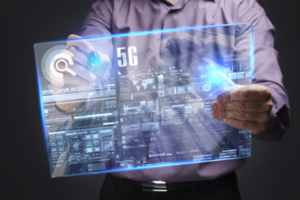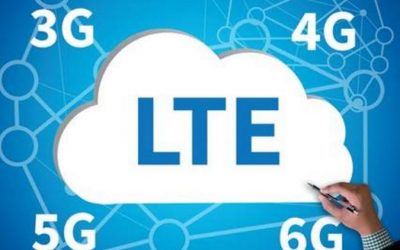Curious – can LTE and 5G compete or compliment IoT networks or the other way around? The big cellular companies have heavily invested in Long-Term Evolution (LTE) networks and the coming 5G network. They are saying it can compete with the Internet of Things (IoT) network that smaller companies are putting their bets on.
“Despite the prospect of new networks that reach farther than cells and let IoT devices communicate for years on one battery charge, many of the power-sipping networked objects to be deployed in the coming years will use LTE and future 5G cellular systems,” reports Stephen Lawson in Computerworld. Lawson’s article depends largely on information from the LTE and 5G network developers..
ZDNet took a look at IoT investments stating that “Investors in Sigfox’s fund raising included major cellular network operators NTT Docomo, SK Telecom, and Telefonica, so it seems that some at least are hedging their bets,” wrote Stuart Corner. Verizon has not made that kind of investment, but it is investing in its own IoT tech. Looking at the Category M1 tech Verizon is working on, it’s hard to see major differences between that and the IoT networks under development, and in place, by the LORA Alliance, Sigfox and others. Cat M1 runs on a 1.4mhz bandwidth with speeds capped at one meg a second. It promises to come in under $10 for consumers.
Verizon is saying LTE and 5G compete or compliment IoT networks and in fact they will exist together. Rosemary McNally, Verizon’s VP for mobile devices and operating system technology, told RCR Wireless that “the Cat M1 network they have in mind will run on the LTE. It will offer more security than IoT”, she promises. So the question needs to be reframed. Instead of asking if the two networks can compete, ask instead do LTE and 5G have to compete on the same grounds as IoT? No, because they don’t have to.
Will LTE and 5G compete or compliment IoT networks?
The IIoT and 5G merge in places like over-the-road shipping. IIoT sensors inside the truck feed data into the 5G and LTE networks, which hand it over to controllers and monitors. Decisions can be made within minutes.
The agriculture industry is also using the IoT. Modern tractors are embedded with sensors that provide regular feedback to the manufacturer. A farmer in South Georgia recently got a call from the tractor dealership. The sales rep said he’d received a message that whoever was driving one of the farm’s tractors was “riding the clutch.” Riding the clutch can cause it burn out, a costly repair. By having IoT in the tractor, the maker was able to monitor use and save the owner money.
Another reason LTE and 5G compete or compliment IoT networks is radio frequencies. The Verizon Cat M1 is going to run on licensed bands. Once those bands hit maximum transmission traffic, Verizon is either going to have to get new bandwidth, which can run to the millions of dollars, or scale back some traffic. If that happens, will Verizon continue to support Cat M1, which appears to have low profit margins? Or, will the company discontinue its IoT investments?

Where 5G and LTE have an advantage is security. Current IoT is running on unlicensed spectrum. Anyone can use it. Turf wars may erupt. Two companies next to each other decide to use the same frequency for their IoT. The signals interfere with each other, causing minor to major problems. With licensed frequencies, this is not a problem.
So can LTE and 5G compete or compliment 5G and LTE complement Iot networks? In truth they compliment each other. Each has strengths and each has weaknesses. Using each system’s strong points to cover the other’s weak points will create a much stronger network than either could be independently.
WHAT THE FUTURE HOLDS
Doug Brake takes a long and hard look at IoT, 5G, LTE and nextgen wireless in a report for the Information Technology and Innovation Foundation. The industry has gone from 1G (analog) in the 80s to 2G, 3G and now 4G in the past few years. He points out the industry goes through a major upgrade every 10 years. Each upgrade has required big investments. With 2020 a short four years away and 5G already being discussed, AT&T, Sprint and the rest are planning major investments to upgrade the wireless network. The smart ones are planning upgrades that allow IoT.
Can LTE and 5G compete or compliment IoT networks?
The questions that should be asked are:
- How can IoT be merged into higher-speed transmissions to let on-site and remote operators make better decisions? SugarCreek is one example of how this merger works. Modern tractors are another.
- What will be the standard? IoT must have a standard just as smartphones do today. A Verizon phone can call, SMS, MMS and so forth to an AT&T phone. Consumers will demand the same for IoT. A homeowner will buy a fridge from General Electric, get an HVAC from Trane and a home entertainment system from Crutchfield. He will demand all the systems function seamlessly on the same IoT network. The IIoT is making inroads on standards, but much more work needs to be done. Equipment needs to move seamlessly from plant to plant. Just installing the hardware is expensive enough. The wireless controls should be plug and play.
- Is a frequency “land grab” ahead as regulators look at the unlicensed frequencies and increasing demand for them? How much is needed?
- What kind of security protocols are needed? Yes, it may take a day to hack into a microwave, but someone is going to do it. That’s an annoyance. Hacking into the smokers at SugarCreek could shut down production for a day or more and cost the company plenty. How can this be stopped? Since IoT is going to be largely low-speed, small data, could each device have a limiter? Perhaps once a certain amount of data is sent, the device takes an action to alert the owner or disconnection from the IoT.








